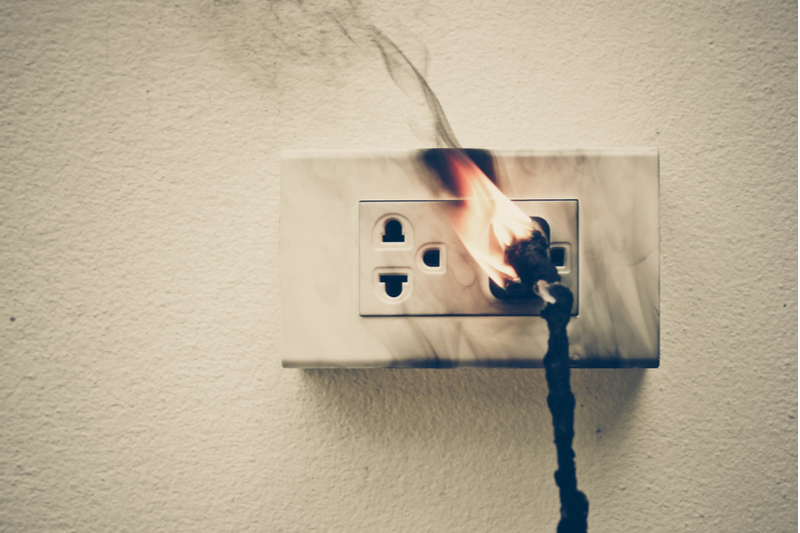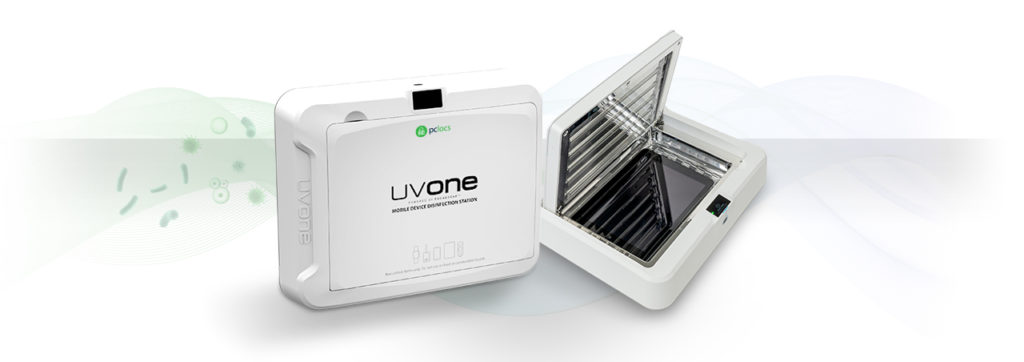Bringing Light to 2020
18.12.20 in Blog
We know this year has been hard, so we made you something. Kick back, relax, and let us bring some joy to your Holiday Season!
From all of us at PC Locs, we hope you have a Merry Christmas and a Happy New Year!
Improve the Speed and Efficiency of Fast-Casual Restaurant Device Workflow
03.12.20 in Blog, Industry News, Product News
Believe it or not, dipping skewers of bread into melted cheese was one of the hottest food fads of the 1970s. As a healthy alternative to ice cream, fro-yo shops were all the rage in the 1980s. The 1990s were known for a coffee shop on every corner. By the 2010s, everyone was crazy for cupcakes. But the food trend with the most significant impact on how, what, and where we eat is the one that combines fine dining fare with the speedy service of fast food. Fast-casual has quickly emerged as one of the most popular restaurant types because it meets consumer demands of convenience, price, and healthful food options. And it’s not just a passing fancy. Even with the general slowdown due to the pandemic, the fast-casual sector has grown at a quicker rate than the rest of the restaurant industry. This segment’s continued success can be partially attributed to the implementation of technology to meet the surge in online ordering, contactless payments, counter service and off-premise dining.
As restaurants adopt new tech to overcome health and safety challenges and exceed consumers’ expectations, they can benefit immensely from including a mobile device deployment solution in their overall technology plan. A centralised point of secure charging provides a repository for devices, reducing device breakage, theft and loss. The critical oversight of not protecting devices when not in use creates painful hassles for employees and managers alike. Read on about the evolution of digital dining, find out how to save time and money by mapping out your device workflow and discover the top benefits of charging stations for fast-casual restaurants.
Dining Has Gone Digital
The fast-casual model is all about finding innovative ways to improve speed, efficiency and quality. These days technology not only supports these three objectives; it also helps restaurants adapt to new safety and hygiene requirements in the wake of COVID-19. Check out these ways that eating establishments are embracing digital devices.
- Taking orders tableside: servers quickly take orders on iPads or tablets, which connect with a POS system improving turn time and reducing room for error.
- Drive-through orders: the kitchen has more time to prepare food orders when guests are greeted in line, and their orders are taken with a handheld device. More time means better accuracy and a better customer experience. Just ask Chick-fil-A which ranks best in both order accuracy and customer service.
- Self-service ordering at a counter or kiosk: prevent the spread of germs through printed menus with iPads that can be disinfected with rapid UV-C technology.
- Contactless payment: seamless credit card processing with contactless cards is more secure and sanitary than handling cash.
- Managing reservations and waitlists: staff can work more efficiently and offer guests faster service by using one interface to manage guests.
Learn how mobile devices can be used for more than just taking orders with these best practices for using iPads in the restaurant industry.
Save Time with Workflow Planning
Usage of mobile devices within the hospitality industry is rapidly expanding. 86% of organisations are currently in the research or pilot phase of an iPad management program. Unfortunately, the majority of those fail to consider device security with secure charging stations. The result is restaurant staff wasting valuable time looking for devices, only to find them partially charged or dead.
Imagine opening a restaurant without creating your menu ahead of time. Planning how to charge and store iPads and tablets shouldn’t be an afterthought either. Save a lot of time and money by determining device management workflow before rolling out new technology to your staff.
When an iPad charging station such as a Putnam 8 Charging Station or Putnam 16 Charging Station are deployed, it eliminates many of the manual workflow processes of checking in and checking out devices and replacing damaged devices.
Here’s how:
Check-in/Check-out
Make sure employees always know where to find a fully-charged device. At the start of each shift, workers retrieve a device from a numbered slot. By assigning a numbered slot to every user, they can take ownership of plugging in their devices. They put their devices back in the slot at the end of the day, where they will be charged and kept secure. All the shift manager is responsible for is unlocking the station in the morning and locking it up at night. With numbered slots, it’s also easy to know which devices are missing with only a quick glance.
Replacement Devices
What happens if a device goes missing, encounters a fatal error, or gets damaged during a shift? With an additional station for “hot spares,” no time is lost getting devices into the hands of workers who need them. Employees can simply swap their broken device for a new one and be on their way with a new device for the day.
Top 8 Benefits of a Putnam iPad Charging Station for Fast-Casual Restaurants
Choosing the right charging station may not seem like a big deal. Still, small differences between manufacturers and products could make a huge impact on your technology rollout and your ability to manage devices long term. Check out the benefits of a Putnam 8 Charging Station or Putnam 16 Charging Station over other charging stations, or no station at all.
- More cost-effective than a smart locker. In an industry that often operates on razor-thin margins, PC Locs appreciates that budget is a concern for many restaurants. The Putnam 8 Charging Station or Putnam 16 Charging Station will keep devices safe, organised and secure at a more economical price than a smart locker.
- Get a return on investment within 18 months. Based on PC Locs data tracking, our customers’ average ROI is 12-18 months.
- Prewired with high-quality, MFI-approved lightning cables reduces up-front costs, and you can kiss tangled cords goodbye. The Putnam 16 station is equipped with 16 prewired MFi-approved lightning cables that would otherwise add additional costs if purchased separately. These certified cords are just the right length to connect to stored devices, no more, no less, no mess. It’s virtually impossible to tangle the charging cables, meaning everything stays organised and in place.
- Save a significant amount of time spent on broken or stolen cord replacements. The Putnam cables stay in the station and can’t be removed easily. Store managers will no longer have to deal with the stress of taking time away from vital day-to-day activities to replace lost or damaged cables. Keeping employees happy and reducing frustration allows you to retain great talent, saving you considerable cash.
- Positively affect your bottom line. The Putnam Tower with an integrated mechanical combination lock secures devices when not in use. So you’ll not only always know where your devices are safely locked away, you’ll lower your per-employee cost by reducing the number of lost or stolen devices.
- Save space. We know that physical back-of-house space = $$. The last thing you’re looking for is a big box taking up valuable real estate. Luckily the cabinet footprint of a Putnam is small, and multiple towers can be stacked. Or easily mount a charging station to the wall with an optional wall-mounting kit keeping devices completely out of the way of the hustling employees fulfilling orders.
- With one glance, see the charging status is for each device. External color-coded LED lights lets your team know which iPads are ready to go so that they never send someone outside with a half-charged device. It also prevents dreaded plugged-in-without-power mishaps—you see it lit up and know immediately that the power supply is connected and doing its job.
- Forget those infrastructure improvements. Eliminate the need to add expensive new electrical outlets or messy power strips. Simply plug your Putnam 8 Charging Station or Putnam 16 Charging Station into a normal 240V power outlet.
Read more about how the Putnam has streamlined an already speedy workflow and saved the cost of replacing cables for Monica and Craig Daniel’s franchised fast-food restaurant in Madison, Wisconsin. Then contact us to discuss the challenges of your mobile workflow and find out how we can help!
Best Practices For Using iPads in the Restaurant Industry
03.12.20 in Blog, Industry News, Product News
The usage of mobile devices within the hospitality industry is rapidly expanding. 86% of organisations are currently in the research or pilot phase of an iPad management program, with many implementing mobile devices with the goal of improving communications, reducing costs or increasing revenues.
Would it surprise you to learn that 73% of organisations fail to plan how they’ll centrally charge and secure those devices, limiting their program’s ability to achieve intended results? This list of best practices for using mobiles devices like iPads in the restaurant industry will help you succeed with your mobile device rollout.
Improve communication between front-of-house and back-of-house. Providing accurate orders to back-of-house staff is imperative, and is hard to manage unless your devices are charged. A centralised and secure charging system aids this communication by arming employees with a ready-to-use device. By providing the perfect solution using a tablet or iPad charging station such as the iQ 10 Sync Charge Station, your employees will always know where to find a fully-charged mobile device.
Increase customer satisfaction. Mobile devices can provide customers with an improved experience and allow you to monitor customer insights. Your staff will be able to solve customer issues quickly and effectively, as well as offer flexible payment options on the iPad or mobile devices. In fact, Apple Pay usage grew 50% in 2017, with an increasing number of consumers looking to utilise it in restaurants and stores. According to QSR Magazine, iPads also allow restaurant waiting staff to “walk around the dining room, input orders, and collect payment from individual customers.” Many have found that food can therefore be delivered directly to the table, which is why devices have become so popular among staff and customers alike, especially in places that require a quick service such as fast-food establishments. By ensuring a smooth mobile management plan, your restaurant will be able to meet customer demands while avoiding the potential pitfalls of modernisation.
Make sure you always know where your devices are, and keep them locked up when they’re not in use. A secure charging station lowers your per-employee cost by reducing the number of lost or stolen devices–ultimately positively affecting your bottom line. Misplaced and uncharged devices can lead to lost productivity and missed sales opportunities. Tablets kept back-of-house are also at risk of damage from hazardous foods and materials, so providing secure storage options for staff is the greatest way to prevent future issues down the line.
Improve efficiency in back-of-house. Using mobile devices to fulfil orders is the best way to stay organised. Chefs can quickly see what’s needed next, and can mark a meal as complete with just a swipe. Tablets can assist with inventory management, so food costs remain low and staff can be sure there are enough ingredients to cover items on the menu that day, without food wastage. This is also a commitment to their environmental impact. As long as they have a fully-charged device ready to go, they’ll be more efficient than ever.
Use the mobile devices for more than just orders. Show your visitors photos of the food they’re ordering, have them view an online menu, and even request positive online restaurant reviews via your mobile devices. Use your mobile devices to the full, so you can get the largest return on investment.
PC Locs products are secure, efficient, and leave a small footprint. We have solutions to meet any of your charging and storage needs, along with durable products and lifetime warranties. To find the right product for you, visit www.pclocs.com.au/products. or contact us at www.pclocs.com.au/contact-us.
Device Charging 101: The Importance of Amps
17.11.20 in Blog, Industry News, Product News
When your phone battery runs low, and you’ve left your cable and power supply at home, it’s hard to avoid the temptation of grabbing the closest charger for a quick charge. From smartphones to laptops, USB charging is everywhere these days. There are even rechargeable dog collars! But just because there’s an abundance of USB chargers and power supplies, that doesn’t mean they’re one size fits all. You would never grab an iPad power supply to charge a Chromebook. We’re here to explain the importance of matching the amps and voltage of a power supply to the product you’re charging, and why you should take notice of them on the tech specs of your charging solution.
Amps Go with the Current
First, let’s start with what an amp actually is. We’re talking electricity and electrons here, not guitars and concerts. When creating an electric current, it’s useful to be able to measure it. Electrical current is measured in ampere or “amps.” The quantity of amps tells you how much electricity is being drawn through the power cable.
Working with Voltage
For most mobile devices, the voltage to recharge the battery is typically five volts of direct current, shown as 5V DC. It’s critical to match the voltage of a power supply or charger to the device you’re charging. If the device specifications read “5V DC,” then 5V DC must be applied to the product. Apply more volts such as 12V, and you run the risk of destroying the device.
If you apply too little, the device won’t work. Think of your device as a flashlight with brand new batteries. When you turn it on, the flashlight is nice and bright because the batteries are at the correct voltage. As time goes by, the batteries start to drain and the voltage drops. The flashlight dims as it’s operating at a lower voltage and eventually, it will stop working. The volts must be correct for a product to function.
Power Supply Considerations
A power supply or charger supplies current. Devices like mobile phones, tablets and laptops consume current and will take as much as they need. If a product requires 2.1 amps, then the power supply should supply 2.1 amps or more. If the power supply provides more than 2.1 amps, the product will still only take 2.1 amps. If the power supply only supplies 1 amp, the device may fail to charge, or it will charge very slowly.
While it’s essential to match the voltage between the charger and the device, it doesn’t matter if the power supply or charger can provide more current then the device requires. However, providing less current will prevent charging or slow it down. A poorly designed charger can also prevent charging or increase the time it takes to charge. That’s why you should only use reputable manufacturers.
REAL-WORLD EXAMPLEAn iPad requires a charger capable of supplying 2.1 amps at a voltage of no less than 4.97V at the charger connector on the cart. Failure to provide this amount of current at the right voltage will extend the amount of time required to charge the iPad battery. This detrimental effect can be easily demonstrated by charging an iPad with iPhone charger. An iPhone charger can only supply the iPad with 1 Amp, which means charging will be dramatically slower (6-7 hours compared to 3-4 hours using a proper charger). In the real world, imagine a student, teacher, nurse or maintenance engineer checking out an iPad in the afternoon that was placed on charge in the morning. The iPad will still not be fully charged. If iPads and tablets are uncharged, students can’t learn, nurses can’t communicate, and employees can’t perform their jobs. |
How to Safely Charge Multiple Devices
When you’re tasked with simultaneously charging multiple devices at once, the challenge is finding enough power outlets to get the job done. That’s why PC Locs offers the remote control ECO Safe Charge™ Power Management System. All you need to get started is your device, cable and power adapter (which plugs into the ECO Safe Charge unit). This intelligent power management unit can be programmed in the following ways:
- Sequentially stage power to a group of connected devices, reducing the possibility of a momentary electrical overload.
- Sequentially stage power to each group of outlets but automatically turns the power off after a selected time has elapsed.
- Individually powers each group of outlets at a time for the duration selected then automatically turns the power off before applying power to the next group of outlets until it has cycled through all groups of outlets.
The great benefits of ECO Safe Charge include:
- Reduces the possibility of blowing a circuit when a Cart or Station filled with devices and is plugged into a single outlet.
- The ECO-TIMER™ functions can reduce your energy consumption, reduce carbon emissions, extend the life of device batteries and reduce your power bills.
Don’t neglect the importance of reading the product specs when purchasing charging solutions to ensure that you’re charging at the correct rate for the devices you’re using. If the spec sheet doesn’t show the charging current, be sure to ask the manufacturer.
If secure and efficient charging is important to you, check out our FUYL Tower smart lockers. All compartments contain a power outlet and a 2.4 amp USB port so you can securely charge almost any device, including iPads, tablets, laptops, mobile phones, Chromebooks and more!
UV Disinfection Stations: You Get What You Pay For
19.10.20 in Blog, Industry News, Product News
When buying any new product, it can be easy to focus on price instead of value. That’s how many people frequently end up buying things that don’t work or last long. Who hasn’t had flimsy clothing shrink in the wash or a cheap gadget break after a few uses? While shopping for a bargain UV disinfection product is tempting, focusing solely on price and choosing the less expensive item can come at a steep cost.
“It takes good engineering and science to develop UV-C technology correctly.”
There’s a reason why lower quality products are usually cheaper to produce. Dr. Jim Malley, president of the International Ultraviolet Association, explains to WebMD that many people don’t understand how difficult and costly it is to come up with useful and effective UV-C technology. “It takes good engineering and science to develop it correctly. There’s a lot of rubbish out there,” he explains. The bottom line, says Malley, “You get what you pay for.”
If you’re paying very little for an unverified UV-C disinfection station or device, be aware that it may be dangerous as well as ineffective. Don’t be fooled by fraudulent claims of cheap UV sanitisation products that have never been tested. Here’s what to look for when sorting through the rubbish to find an effective professional-grade UV-C station that meets the highest standards and mitigates viral bacteria’s spread.
“Many consumer-grade UV products are fakes that carry the risk of accidental exposure to dangerous ultraviolet light.”
One of the most common consumer-grade UV products is a light wand. We certainly understand the allure of these devices. You can easily find them online, and many claim to kill viruses with a quick wave of a light over a surface. But the problems with design and usability of these readily available products outweigh the potential benefits. This makes them not only a poor value at any price, but also potentially dangerous. Discovery magazine reports, “For starters, many of them are fakes. Others are of such low power that you’d have to hold the device over an item (say, a mask) for 30 minutes to maybe get any disinfection, much less destroy SARS-CoV-2, the virus responsible for COVID-19. You also risk accidental exposure to dangerous ultraviolet light.”
When the ultraviolet light is not contained, consumer-grade or “home use” portable sterilisers and wands are not considered safe by either the independent safety science company UL or the U.S. Food and Drug Administration. “UV light may be used to disinfect surfaces in a setting where UV light does not escape to the surroundings. If products generating UV light do not shield the user from exposure, they pose a potential health hazard depending on the wavelength, intensity, and exposure time,” states the FDA.
How to Compare Professional Grade-UV-C Sanitisation Products
When comparing professional-grade UV-C sanitisation products, durability, effectiveness, certifications, and convenience are all important considerations along with the price. It is also essential to check the number and type of bulbs and how many hours the bulbs last before needing to be replaced. UVone™ Mobile Device Disinfection by PC Locs includes sixteen long-lasting, high-powered UV-C bulbs. In comparison, other manufacturers’ professional-grade disinfection stations may contain as few as six bulbs. In Manual Cycle Mode, UVone users can expect 25,000 hours of bulb life or three million uses. If a bulb burns out, the UVone easy-to-use app provides visibility to see which bulb needs to be changed.
Use the chart below as a checklist when evaluating professional grade disinfection stations. Pay close attention to the documentation that verifies that the device has been through 3rd party lab testing to support the manufacturer’s claims of kill rates and kill times.
|
Features/Benefits |
Consumer Grade |
UVone Professional Grade |
Other Professional Grade |
|
Number of Bulbs |
Most handheld wands include one 36-watt bulb, portable sterilisers may include 2 UV-C lamps |
16 high-powered, professional-grade UV-C blubs |
Varies by product, may contain as few as 6 |
|
Number of Bulb Uses |
Consumer products lack information on the number of bulb uses |
25,000 hours (3 million uses) |
Varies by product, one claims up to one year, another 2,000 hours with average daily use |
|
Testing Data |
None |
Extensive research from BSL-2 Safety Lab, testing data available upon request |
Varies by product, request testing data from the device manufacturer |
|
Certifications |
None |
CE and ETL Certified |
Varies by product, request proper safety certifications from the device manufacturer |
|
Touchless |
No |
Yes, top-loading with motion-activated open/close door and touchless start |
No other professional-grade units are 100% zero-touch with touchless open, close and start |
|
Mountable |
Varies by product |
Yes, to increase hygiene compliance UVone can be wall or countertop mountable |
Varies by product, most are countertop only |
|
Customer Support |
No |
YES, world-class with an NPS of 97, which competes with some of the largest tech giants |
Varies by product |
|
Kill Rate |
Most consumer products lack performance data from independent testing labs |
MRSA: 99.999% in 30 seconds |
Varies by product, from 3-Log reduction to a 6-Log reduction for 12 minutes of kill time |
|
Kill Time |
30 minutes for low-power UV light wands to maybe get any disinfection, 10 minutes or more for UV-C sterilisation boxes |
30 seconds |
Varies by product, from 20 seconds – 12 minutes |
For years PC Locs products have been known to save time and make life easier. UVone by PC Locs is no exception. It’s six times quicker than traditional wipes and conveniently integrates into any environment to increase hygiene compliance. Compared with other professional-grade disinfection stations, UVone’s 5-Log reduction in 30 seconds is on par or better than competitors. Also, no other units are 360-degree, 100% zero-touch with touchless open, close and start and come with our unrivalled world-class customer support. Contact us to learn more.
*PC Locs’ kill rate claims are based on data conducted by an accredited, GLP compliant, BSL-2 laboratory. Kill rate claims for MRSA at a 5-log kill or 99.999% are based on final GLP testing. Kill rate claims for C. Diff are at a 4-log kill or 99.997% in 60 seconds and a 3-log kill or 99.9% in 30 seconds. C. Diff results are based on final GLP testing. Real world results may vary. Testing data available upon request.
[1] UV Light Wands Are Supposed to Kill Viruses. But Do They Really Work? – Discover Magazine






